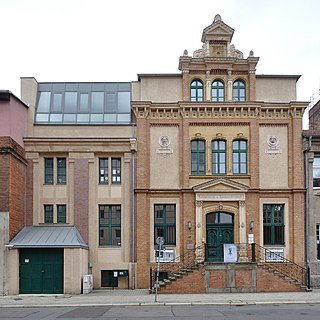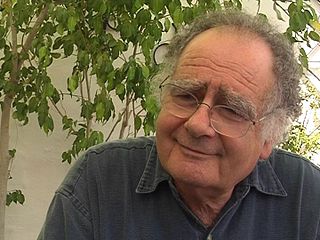This article needs additional citations for verification .(April 2014) |
Master of European Design (MEDes) is a unique degree programme within a network of seven leading design schools in Europe. [1]
This article needs additional citations for verification .(April 2014) |
Master of European Design (MEDes) is a unique degree programme within a network of seven leading design schools in Europe. [1]
During the five-year programme, students experience three design education systems and join a strong international community. The location diversity provides insight into design approaches, multi-national perspectives and creates sensitivity towards cultural differences.
During the two years abroad the students follow the curricular content offered by the programme of the respective partner university. This results in each student acquiring a unique skill set and combination of projects. The studies abroad take place in English or in the respective national language.

The Academy of Fine Arts Vienna is a public art school in Vienna, Austria.

The Polytechnic University of Milan is the largest technical university in Italy, with about 40,000 students. The university offers undergraduate, graduate, and higher education courses in the fields of engineering, architecture and design.

Konstfack University of Arts, Crafts and Design, is a university college for higher education in the area of art, crafts and design in Stockholm, Sweden.

The Academy of Fine Arts, Munich is one of the oldest and most significant art academies in Germany. It is located in the Maxvorstadt district of Munich, in Bavaria, Germany.

Adolf Richard Hölzel was a German painter. He began as a Realist, but later became an early promoter of various Modern styles, including Abstractionism.

Willi Baumeister was a German painter, scenic designer, art professor, and typographer. His work was part of the art competitions at the 1928 Summer Olympics and the 1932 Summer Olympics.

The Prussian Academy of Arts was a state arts academy first established in Berlin, Brandenburg, in 1694/1696 by prince-elector Frederick III, in personal union Duke Frederick I of Prussia, and later king in Prussia.
Ronald Jones was an American artist, critic and educator who gained prominence in New York City during the mid-1980s. In the magazine Contemporary, Brandon Labelle wrote: "Working as an artist, writer, curator, professor, lecturer and critic over the last 20 years, Jones is a self-styled Conceptualist, spanning the worlds of academia and art, opera and garden design, and acting as paternal spearhead of contemporary critical practice. Explorative and provocative, Jones creates work that demands attention that is both perceptual and political." Labelle positions Jones along the leading edge of a "contemporary critical practice" that is perhaps best described as interdisciplinary or transdisciplinary.

A Kunstgewerbeschule was a type of vocational arts school that existed in German-speaking countries from the mid-19th century. The term Werkkunstschule was also used for these schools. From the 1920s and after World War II, most of them either merged into universities or closed, although some continued until the 1970s.

Micha Ullman is an Israeli sculptor and professor of art.

Mark Lammert, is a German painter, illustrator, graphic artist and stage designer. He lives and works in Berlin.

The Academy of Fine Arts Nuremberg was founded in 1662 by Jacob von Sandrart and is the oldest art academy in German-speaking Central Europe.
Georg Meistermann was a German painter and draftsman who was also famous for his stained glass windows in the whole of Europe.

The State Academy of Fine Arts Karlsruhe or Staatliche Akademie der Bildenden Künste Karlsruhe is an academy of arts in Karlsruhe, in Baden-Württemberg in south-western Germany.
Karin Sander is a German conceptual artist. She lives and works in Berlin and Zurich.

Anthonie Wilhelmus (Toon) Verhoef is a Dutch painter, ceramist and art lecturer.

The State Academy of Fine Arts Stuttgart is a public fine art university in Stuttgart, Germany. It was founded in 1761 and has been located on the Weissenhof since 1946. Its campus consists of three buildings: the Altbau, Neubau 1 or "Architects' Building", and Neubau 2.
Wolfgang Kermer is a German art historian, artist, art educator, author, editor, curator of exhibitions, art collector and professor. From 1971 to 1984 he was repeatedly elected Rector of the State Academy of Fine Arts Stuttgart and thus the first scientific and at the same time youngest teacher in this position in the history of the university. Under his rectorate, the State Academy of Fine Arts Stuttgart was reformed in 1975 and 1978 on the base of two new university laws of the State of Baden-Württemberg and thus, for the first time in its history, authorized to set up diplomas for all courses. One of the accents of his work was the promotion of talented graduates of the academy: In 1978 he organized the first of the so-called ″debutant exhibitions″, an ″unconventional contribution to the promotion of young people″, supported financially by the State of Baden-Württemberg.